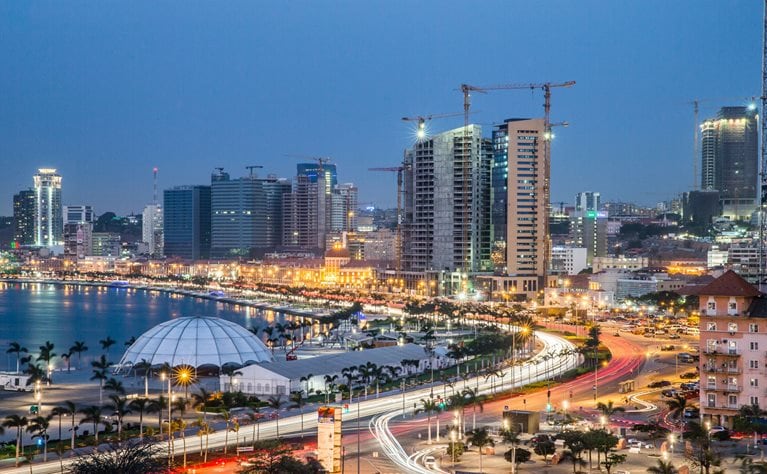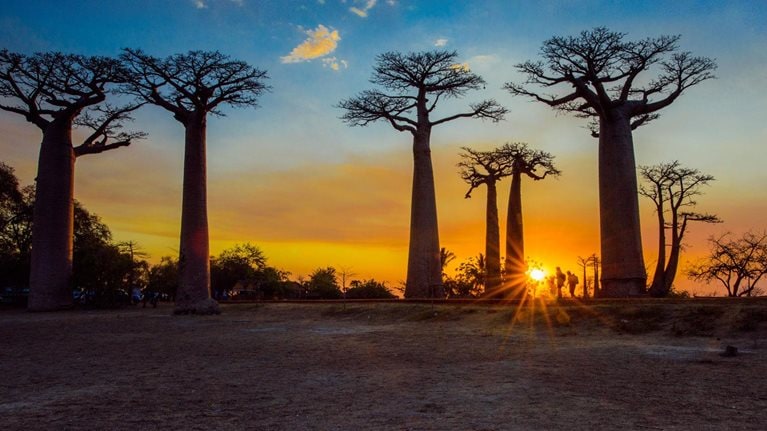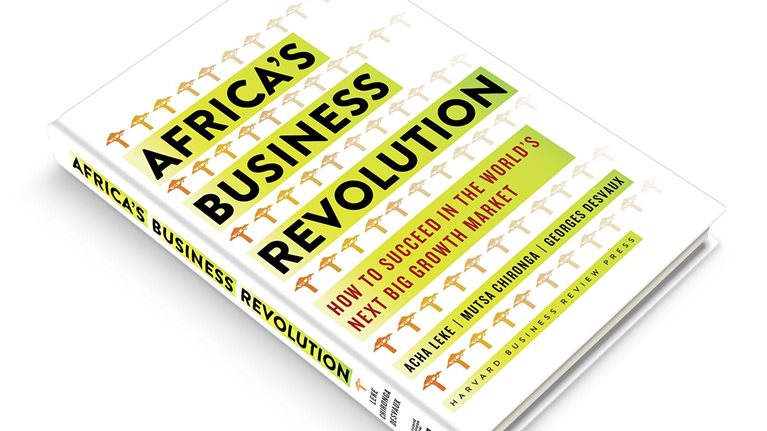As global business interest in Africa has blossomed, we have found ourselves traveling the world to help executives understand where the true opportunity lies, and how their businesses can seize that opportunity before their competitors do. A few years back, one of us (Acha) found himself in Seoul, presenting to the chairman of one of the largest Korean conglomerates. At that stage, the company had almost no presence in Africa, and its executives were concerned that their Chinese competitors were stealing a march on them.

The McKinsey team arrived at the meeting armed with a PowerPoint presentation, whose first page was a map of Africa. We’d intended to flip quickly past it, but the chairman stopped us in our tracks. “You’ve made a mistake,” he exclaimed. “You have two countries called Congo!” In fact, there are two countries named after the mighty River Congo. One is the mineral-rich but conflict-ridden Democratic Republic of the Congo (DRC), with a population of around 87 million and a land area 80 times that of Belgium, its former colonial power. On the other side of the river is the Republic of the Congo, with a population of just 5 million but a GDP per capita ten times that of its neighbor, reflecting its position as a significant oil producer.
“Yes, there are two Congos. Why not? There are two Koreas!” we told the chairman. There were laughs all round, but this moment of confusion underlined a real issue facing any company seeking to build or grow a business in Africa: how to navigate the continent’s bewildering scale and complexity. Africa’s land area exceeds that of China, Europe, and the United States combined (Exhibit 1). Its 54 countries have a collective population of 1.2 billion. It has over a thousand languages and huge diversity in income levels, resource endowment, infrastructure development, educational attainment, and business sophistication.

It’s one thing to get a handle on the physical map of Africa, but it’s an even greater challenge to create an accurate mental map of the continent (Interactive 1). In our experience, the instinct of most businesspeople is to underestimate Africa’s size and potential as a market and overestimate the challenges of doing business there.
Let’s test your own perceptions: How many companies in Africa earn annual revenues of $1 billion or more? Take a guess.
If you guessed fewer than 50 such firms, you’re in good company. We surveyed over a thousand business executives across Africa and the world, and 50 was the maximum number chosen by most respondents. Several said “zero.” When we asked the same question at events such as the World Economic Forum, participants were only slightly more optimistic: most put the number of billion-dollar firms at between 50 and 100. The reality? There are 400 such companies—and they are on average both faster growing and more profitable than their global peers.
Closing the perception gap

The magnitude of the mismatch between global perception and on-the-ground reality prompted us to write a book, Africa’s Business Revolution: How to Succeed in the World’s Next Big Growth Market. It presents a strategic guide to business in Africa based on interviews with 40 of the continent’s most prominent executives and development leaders, case studies of thriving companies in sectors ranging from banking to technology to manufacturing, and proprietary McKinsey research.
The perception gap that motivated our book extends to realms such as technology. Although Africa historically lagged, this young continent, with a median age of around 20, has become an eager adopter and innovator in all things digital and mobile. There are already 122 million active users of mobile financial services in Africa. The number of smartphone connections is forecast to double from 315 million in 2015 to 636 million in 2022—twice the projected number in North America and not far from the total in Europe. Over the same period, mobile data traffic across Africa is expected to increase sevenfold.

Africa’s Business Revolution: How to Succeed in the World’s Next Big Growth Market
We don’t pretend that Africa is an easy place to do business, given its geographic complexity, infrastructure gaps, and relative economic and political volatility. In this article, which is adapted from our book, we’ll try to explain why it’s worth the effort. In short, Africa is a 1.2 billion–person market on the cusp of transformative growth. It already has more big companies than you would imagine—but room for many more. And entrepreneurial energy pulses throughout the continent.
We also lay out a framework for leaders seeking to prosper with business in Africa. It starts with mapping a clear-eyed strategy, but that’s far from sufficient. Pursuing business-model innovation, unleashing local talent, building long-term resilience, and promoting local development also are “must dos” in Africa. In a companion article, “Leadership lessons from Africa’s trailblazers,” we elaborate on these priorities through the eyes of five African leaders, each of whose journey helps illustrate crucial aspects of this framework for growth.
A 1.2 billion–person market on the cusp of transformative growth

Africa’s current population of around 1.2 billion is projected to double over the next 30 years, making Africa an exception in a world of slowing population growth. Moreover, it will soon be the fastest-urbanizing region in the world. Africa already has as many cities with more than one million inhabitants as North America does, and more than 80 percent of its population growth over the next two decades will occur in cities (Interactive 2). The income per capita of Africa’s cities is more than double the continental average, making them attractive markets for many businesses.
That points to a historic economic shift under way. Whether in Europe and North America in the 19th century or Asia in the 20th, rapid modernization of the sort Africa is experiencing has given rise to increases in GDP per capita—by a factor of ten, for example, in China over the 30 years since the launch of economic reforms at the end of the 1970s.
There is an element of breaking ground, but the long-term rewards will be very high.
Tidjane Thiam, the Ivorian-born CEO of Credit Suisse and former head of Prudential, the global insurer, is a keen observer of this growth phenomenon—and its implications for business. “The human brain thinks in a linear fashion,” he remarked to us, “but exponential growth is in fact more common in nature. Think of an acorn growing into an oak tree.” Thiam gained firsthand experience of this truth while building Prudential’s business in emerging Asia. One $50 million investment multiplied to $4 billion in little over 15 years—an 80-fold expansion. Thiam believes that conditions in many African markets today offer similar opportunities. “You’ve got the demographic boom combined with GDP growth rates of 6, 7, or 8 percent.” Companies that get in early and shape the right strategy can sustain double-digit profit growth over decades, he said. “There is an element of breaking ground, but the long-term rewards will be very high.”
When we surveyed over a thousand global and African executives, the majority concur with this forecast. They predicted that most African households will join the consumer class in the next 20 years. They also expect that rising investment in both digital technologies and natural resources—the new and old economies—will boost development. Nearly 90 percent of African-based companies, and 58 percent of those based in other regions, expect their revenues in Africa to grow over the next five years, and most plan to expand their African footprint to additional countries (Exhibit 2).

More big companies than you would imagine—but room for many more

McKinsey’s database of large companies with business in Africa reveals surprising figures: 400 companies earning revenues of $1 billion or more and nearly 700 companies with revenue greater than $500 million (Interactive 3). These companies are increasingly regional or pan-African. They have grown faster than their peers in the rest of the world in local currency terms, and they are also more profitable than their global peers in most sectors. Between them, they boasted $1.4 trillion in revenues in 2015. Around two-fifths of them are publicly listed, and the remainder are privately held. Just over half are owned by Africa-based private shareholders, while 27 percent are foreign-based multinationals and 17 percent are state-owned enterprises.
One of those big firms is Nigeria-based Dangote Industries, which manufactures commodities, including cement, sugar, and flour, in massive volumes. By 2017, the Dangote Group’s annual revenues exceeded $4 billion, and founder Aliko Dangote had become Africa’s richest person and the world’s richest black man. Yet he continued to aim high. His new growth projects include the world’s largest single-train petroleum refinery, scheduled to open at the end of 2019. It is being built near Lagos, Nigeria’s bustling commercial capital, at a cost of $12 billion. Dangote’s philosophy is: “Think big, dream big, and do big things.”
Another example is South Africa–based MTN, the mobile-phone company with more than 200 million subscribers in 22 nations in Africa and the Middle East. Yet another is Ethiopian Airlines, which has driven an aggressive expansion strategy that nearly tripled its passenger numbers from 3.1 million in 2010 to 8.8 million in 2017. In the year to June 2017, the airline recorded a full-year profit of $232.0 million on revenues of $2.7 billion—more than many global airlines.
Despite some notable corporate success stories, however, Africa lags behind other emerging regions in hosting large companies. Excluding South Africa, it has just 60 percent of the number one would expect if it were on a par with peer regions. In fact, nearly half of Africa’s big firms are based in South Africa. Moreover, Africa’s big companies are smaller, on average, than those in other emerging economies. Because of these twin issues—too few large firms and too little scale among those that do exist—the total revenue pool of large companies in Africa (excluding South Africa) is about a third of what it could be.

Africa’s relative lack of big companies matters not just for shareholders but also for society, because these firms are the primary drivers of economic growth. We might think of big companies as the baobabs of the business landscape: not only do they tower above the rest, they also have deeper roots and longer life spans. Known as the tree of life, the baobab produces highly nutritious fruit that sustains many communities. Business baobabs, too, enliven their local economies: they contribute disproportionately to higher wages and taxes, productivity improvement, innovation, and technology dissemination. Like baobabs, large firms create their own ecosystems, fostering small-business creation through their supply chains and distribution networks. They are also better able to attract capital, which means they are much more likely to compete on the global stage. We believe Africa has the space—and need—not just for the hundreds of billion-dollar companies that are thriving across the continent today but also for many more.
A hotbed of entrepreneurial energy

If Africa is to build its rightful number of large companies, then many of its younger firms will need to think big: they are the business baobabs of the future. Indeed, smaller and medium-size enterprises (SMEs) have a critical role to play in accelerating economic development, serving the unmet needs of African markets, and especially creating jobs. The World Bank, for example, estimates that SMEs are responsible for 77 percent of all jobs in Africa and as much as half of GDP in some countries. Midsize companies in particular are major job creators: McKinsey research shows that firms with between 50 and 200 employees create jobs at twice the pace of both large corporations and small businesses.
In the course of writing this book, we encountered dozens of entrepreneurs who have launched start-ups explicitly targeted at addressing Africa’s unmet demand. One example is Jumia, one of the continent’s leading e-commerce players. Another is M-Kopa, which has sold off-grid solar-power kits to 600,000 rural households and financed them via mobile money. Yet another is investment company Roha, which has made the development of greenfield manufacturing plants in Africa a core focus of its business. One such opportunity is glass-bottle manufacturing in Ethiopia to supply the country’s fast-growing beverage industry: to date, drink makers have had to import 90 percent of their bottles. With its partners, Roha is building an $80 million glass-bottle plant near Addis Ababa. When completed, the plant will have the capacity to produce 200 million bottles a year.

There is space for many other start-ups to build scale in Africa—whether in retail, technology, manufacturing, agriculture, mining, or a host of other sectors. Africa’s vast unmet needs and unfulfilled demand make it a continent ripe for entrepreneurship and innovation at scale.
More than good strategy required

Not every company will succeed in translating the potential we’ve just described into growth that is rapid, consistent, and profitable. In a marketplace that is both complex and increasingly competitive, there are huge differences in performance between the most successful companies and the rest. Some companies are the lions of African business, standing head and shoulders above the rest. Others risk becoming the lions’ prey.
What does it take to win in Africa? As in any market, deciding where and how to compete is critical. Companies with exposure to high-growth cities, countries, and regions improve their odds. Likewise, companies that ride strong industry trends, such as rapid adoption of mobile and digital technology, have much better odds of outperforming. Sometimes those are “trends with a twist,” such as Africa’s large unserved markets or infrastructure gaps: to benefit from such trends, companies need the imagination to see unmet demand or unsolved problems as opportunities.

But good strategic choices are just one piece of the puzzle for companies seeking to prosper in Africa. As Exhibit 3 suggests, a smart approach to geographic expansion should go hand in hand with much more: a plan for innovating your business model. Operational solutions that will help you manage risk and boost your company’s resilience to Africa’s inevitable shocks. Fresh approaches to unleash Africa’s talent, including nurturing vocational and managerial skills at scale and fostering a new kind of business leader for the African century ahead—and a plan for doing good while doing well. These priorities are being powerfully illustrated right now by many local leaders who are pursuing them. In “Leadership lessons from Africa’s trailblazers,” we’ll introduce you to five such leaders, and in Africa’s Business Revolution, you’ll meet many more.

Africa is home to a consumer class whose spending outstrips India’s, and it will soon have double the number of smartphone connections than North America. Yet poverty remains widespread, as do infrastructure gaps, fragmented markets, and regulatory complexity. By recasting challenges as a spur for innovation, and unmet market demand as room for growth, business leaders can help their companies, and the continent, to thrive.


